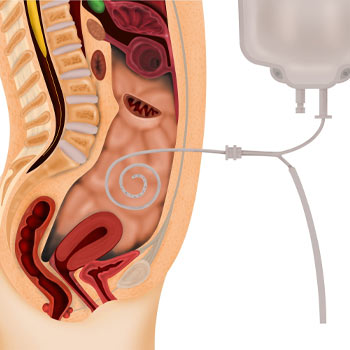Peritoneal dialysis Sheath Placement
- Home
- Services
- Pulmonology
- Peritoneal dialysis Sheath Placement
What is Peritoneal Dialysis Sheath Placement?
Peritoneal dialysis (PD) is a crucial treatment for individuals with end-stage renal disease (ESRD), offering a way to filter waste products and excess fluids from the body when the kidneys can no longer perform this function adequately. Peritoneal dialysis sheath placement is a specialized procedure integral to the effective administration of peritoneal dialysis. Here’s a comprehensive guide to understanding this procedure
How does Peritoneal Dialysis work?
Peritoneal dialysis utilizes the peritoneum, a membrane lining the abdominal cavity, as a natural filter for dialysis. It involves the introduction of a dialysis solution into the peritoneal cavity through a catheter. The solution absorbs waste products and excess fluids from the blood vessels lining the peritoneum, subsequently draining out, thereby facilitating the cleansing process

What is the significance of Peritoneal Dialysis Sheath Placement?
Peritoneal dialysis sheath placement is a procedure that involves the insertion and positioning of a catheter into the peritoneal cavity. This catheter serves as a conduit for the exchange of dialysis solution during peritoneal dialysis sessions. Proper placement is critical to ensure efficient fluid exchange and to minimize the risk of complications such as infection or catheter malfunction
What are the key steps involved in Peritoneal Dialysis Sheath Placement?
Preparation
Before the procedure, the patient undergoes evaluation to determine suitability for peritoneal dialysis. This assessment includes imaging studies to identify optimal catheter insertion sites and ensure the absence of abdominal abnormalities that could complicate catheter placement
Anesthesia
Local anesthesia is typically administered to numb the insertion site, ensuring patient comfort during the procedure.
Catheter Insertion
The peritoneal dialysis catheter is usually inserted into the lower abdomen through a small surgical incision. The placement is guided by imaging techniques such as ultrasound or fluoroscopy to ensure precise positioning within the peritoneal cavity
Securing the Catheter
Once in place, the catheter is secured with sutures or a stabilizing device to prevent movement that could lead to dislodgement or discomfort
Post-Procedure Care
After the placement, patients are monitored closely for any signs of complications, such as bleeding, infection, or leakage of dialysis fluid. They receive instructions on catheter care and maintenance to promote optimal function and reduce the risk of infections
What are the benefits of Peritoneal Dialysis Sheath Placement?
- Convenience: Peritoneal dialysis allows for more flexible treatment schedules that can be performed at home, offering greater independence compared to in-center hemodialysis
- Preservation of Residual Kidney Function: Unlike hemodialysis, peritoneal dialysis may help preserve residual kidney function in some patients
- Quality of Life: Many patients report a better quality of life with peritoneal dialysis due to fewer dietary restrictions and less impact on daily activities
Peritoneal dialysis sheath placement is a crucial step in the management of ESRD, enabling patients to undergo effective peritoneal dialysis. By understanding the procedure and its benefits, patients and caregivers can make informed decisions about their treatment options. For those considering peritoneal dialysis, consulting with a nephrologist or renal specialist is essential to determine the most suitable approach based on individual health needs and preferences.
